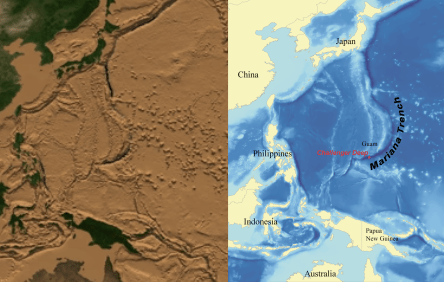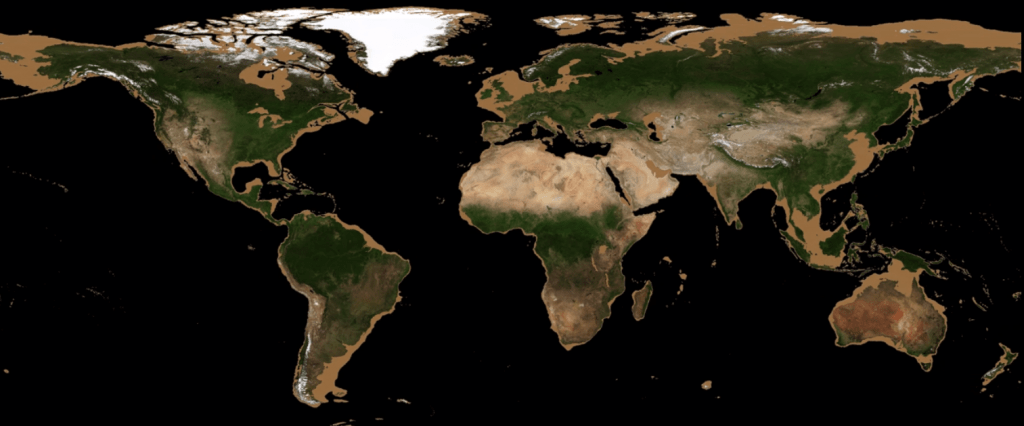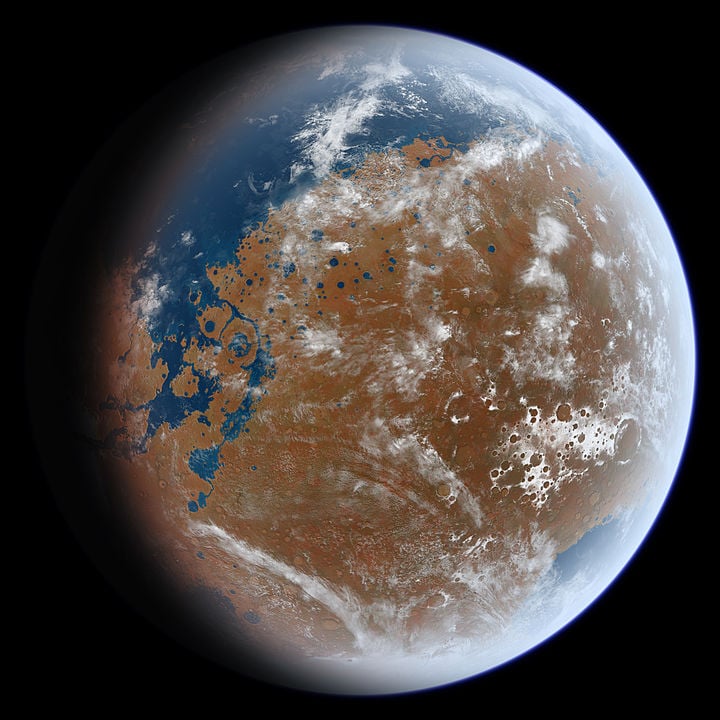Don't worry. The oceans aren't going to dry up. At least not any time soon, so no need to add it to the list of things to worry about.
But, what would our planet look like if they did? Dr. James O'Donoghue from JAXA decided to find out.
12 years ago NASA made a video of the Earth's oceans drying up. Much of the data for that animation came from NASA's Earth Observatory, which is an online center for satellite imagery and data. That video showed the Earth's ocean's removed in 10 meter-per-frame increments. Eventually, only the Mariana Trench—the deepest point in Earth's oceans—has any water.
But that was 12 years ago, and the video is not high resolution.
In December, O'Donoghue decided to re-create the video at a higher resolution.
In an email exchange with O'Donoghue, he told Universe today how he came to create it.
"NASA's now 12-year old animation was only 512p resolution, much lower
than today's standard. On their web-page they actually state,
'The high resolution frames labeled 'Mask' can be used with the
individual images below to create higher resolution versions of this
animation,' which seemed, more or less, to call for someone to re-do it
eventually."
O'Donoghue is a planetary scientist at JAXA, Japan's Aerospace Exploration Agency. He's done ground-based research on the upper atmospheres of the gas giants Saturn and Jupiter. But he also has expertise in data analysis and animation, which led to this project.
"I remade it in a much more modern 4K resolution, which
allows a lot more fine detail to be seen," he told Universe Today. "I also realised that their animation went very rapidly past the first few hundred metres of sea level decrease, and since so much interesting stuff happens in that window I felt the need to slow down that part for the audience."
The video shows how shallow some of the oceans are, and gives a clue to what Earth was like when much more of its water was frozen, and how humans may have migrated.
"The shallow seas fade quickly between the UK and Europe, Russia and
Alaska and Asia/Oceania and Australia, so quite instantly we can
appreciate how water only barely separates them. During the last Ice Age
sea levels were 100s of metres lower as large amounts of water was
locked up as ice in Earth's polar regions, so we can see in the early
parts of the video how human migration was possible before ships were
developed. So rather than simply show what the sea floors look like, the
animation I felt told an ancient human story.
The image is a fascinating look at the nature of our planet. But O'Donoghue gives credit to the people who created the original, rather than himself.
"If the folks that originally came up with this animation are reading this, I'd
like to tell them their idea was wonderful."
Each planet is different, but there's another planet that's worth looking at on the topic of disappearing oceans: Mars.
We know that Mars was once a much wetter and warmer place than it is now. The Mars Ocean Hypothesis shows that almost one-third of Mars was once covered in oceans. The evidence is in the chemical composition of Martian soil, and also features that resemble ancient shorelines. Geological evidence suggests that Mars' ancient ocean was in the northern hemisphere, where the surface is unusually flat, and is 4–5 km (2.5–3 miles) lower in elevation than the planetary mean.
More:
- Wikipedia: Ocean
- NASA: Earth Observatory
- NASA: NASA Research Suggests Mars Once Had More Water Than Earth’s Arctic Ocean
 Universe Today
Universe Today



